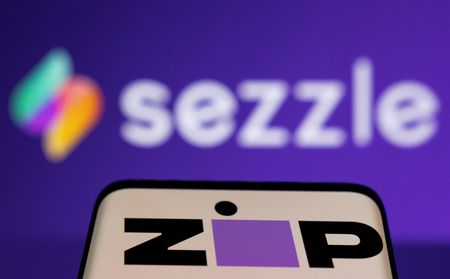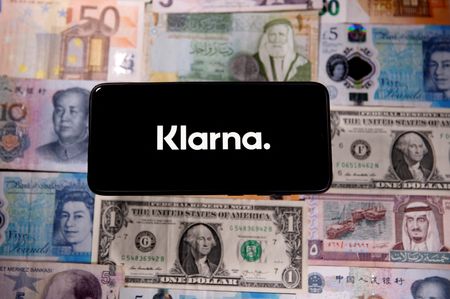

By Elizabeth Howcroft
LONDON (Reuters) – Reduced consumer spending, rising interest rates and trickier credit conditions spell trouble for Buy Now Pay Later lenders, raising the prospect of consolidation in the sector.
Buy Now Pay Later (BNPL) firms have created one of the fastest-growing segments in consumer finance, with transaction volumes hitting $120 billion in 2021 up from just $33 billion in 2019, according to GlobalData.
The BNPL business model emerged out of a very low interest rate environment which enabled BNPL firms to raise funds at relatively low cost and offer point-of-sale loans to customers on online shopping websites.
Consumers pay for their purchases in instalments over a period of weeks or months, usually interest-free, and BNPL firms charge online retailers a fee for each transaction.
The model proved popular among young consumers during the COVID-19 pandemic as e-commerce volumes soared, with Buy Now Pay Later transactions accounting for $2 in every $100 spent in e-commerce last year, according to GlobalData.
But the sector faces a reckoning as the circumstances which fuelled its explosive growth are coming to an end, with consumers cutting spending and rising interest rates pushing up BNPL firms’ funding costs, squeezing their margins.
There are more than 100 BNPL firms globally, according to S&P Global Market Intelligence’s 451 Research.
Apple’s announcement this week that it would launch its own deferred payments service will further intensify competition and briefly knocked the stock price of listed players such as Affirm Holdings, the biggest BNPL firm in the United States, and Australia’s Zip Co and Sezzle Inc.
Their share prices were already under pressure, with Affirm down around 75% this year.
Shares of Jack Dorsey’s payments firm Block Inc, which bought Australian BNPL provider Afterpay in a deal completed in January, are down around 48% in 2022.
“Right now there’s more caution and less interest (in BNPL firms from investors) because of the financial risks that could become apparent here if we are in an economic slowdown or a potential recession,” said Bryan Keane, senior payments analyst at Deutsche Bank.
Graphic: Buy Now Pay Later stocks – https://fingfx.thomsonreuters.com/gfx/mkt/lbvgndaaxpq/Buy%20Now%20Pay%20Later%20versus%20Nasdaq.PNG
Top BNPL firm Klarna, which was valued at $46 billion following a funding round a year ago, recently laid off 700 staff – 10% of its workforce.
The Swedish-based company cited shifting consumer sentiment, inflation and the war in Ukraine as reasons, and said it is in talks with investors to raise more money.
For smaller players, many of them fledgling start-ups, accessing funding to lend to shoppers will become more difficult.
“Most Buy Now Pay Later providers don’t have access to deposits, they generally aren’t financial institutions,” said Jordan McKee, principal research analyst at 451 Research. “There are certainly a few exceptions to that. But generally they need to borrow these funds to lend out and as interest rates associated with borrowing those funds increase … it’s costing them more money to extend money out to consumers and that puts pressure on their margins.”
Companies that are more insulated include Klarna and Block which have bank charters and could fund with deposits, analysts say.
The sector also faces increasing scrutiny from regulators, as consumers struggle with rising costs. UK charity Citizens Advice said on Tuesday that half of 18-34 year olds in Britain had borrowed money to make their BNPL payments.
Britain’s finance ministry has launched a consultation on how BNPL firms should be regulated. Australia’s financial services minister said on Tuesday https://www.theguardian.com/business/2022/jun/08/embattled-buy-now-pay-later-sector-to-be-regulated-under-credit-card-laws the government would push to regulate BNPL lenders under credit laws.
AFFORDABILITY CHECKS
New entrants are undeterred by the downturn: British banking start-up Zopa, which reached a $1 billion valuation in a funding round in October, announced on Tuesday that it would launch BNPL products as part of its offering.
Tim Waterman, Zopa’s chief commercial officer, expects upcoming regulations to include more stringent checks that customers can afford to make their payments, and that reliance on the services will have to be reported to credit reference agencies.
“The affordability checks are going to create more friction within the customer experience and potentially tip the balance for merchants,” he said. “At the moment BNPL is very efficient in terms of driving sales and conversion rates and that may change slightly.”
Deutsche Bank’s Keane said that merchants may put up with higher fees if BNPL firms are bringing more customers to their websites, but that would favour the big players.
“I think some small players will probably go out of business or they’ll try to connect onto some other tech players or some consolidation to the bigger players,” Keane said. Some big financial institutions may also be interested in M&A opportunities in the sector, analysts say.
Rob Galtman, senior director at Fitch Ratings said that, although any lending product risks higher default rates during a downturn in the economic cycle, BNPL firms may be protected by their ability to control what kind of line of credit they offer based on a users’ behaviour, as well as the fact that they typically offer shorter-term loans.
Apple’s entry “signals a validation of these offerings in the market”, he said.
Deutsche Bank estimates that the market could reach $482 billion by 2025, and account for 5.6% of e-commerce spending including payments for travel and events.
“What the Apple move telegraphs to me is that increasingly Buy Now Pay Later is being seen as a feature, not a standalone business,” said McKee.
(Reporting by Elizabeth Howcroft, additional reporting by John McCrank; Editing by Sinead Cruise and Susan Fenton)

